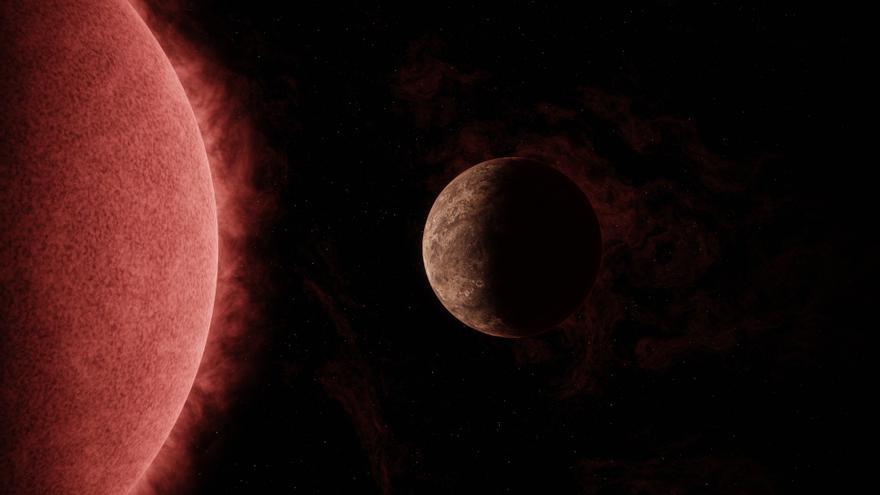
An international scientific team, including researchers from the Institute of Astrophysics of Canarias (IAC), has discovered an exoplanet similar in size to Earth, which orbits around an ultra-cold red dwarf located about 55 light years away.
The research findings have been published in the journal Nature Astronomy, and the IAC has noted in a statement that over 70 percent of the stars in the Milky Way are M dwarfs, also known as red dwarfs, which, compared to the Sun, are not only colder and less bright but also have very long lifespans.
The scientific centre adds that while stars like the Sun burn for around 10 billion years before becoming red giants, M dwarfs continue to shine for 100 billion years or more, potentially providing an even longer window for life to develop.
Among red dwarfs, the so-called ultra-cold dwarfs form a group of low-mass, even less bright, and longer-lived stars.
In fact, due to the slow consumption of their fuel, it is believed that these will be the last stars to burn when the Universe turns cold and dark.
According to models, these ultra-cold dwarfs should host large populations of nearby rocky and potentially habitable planets, with a well-known example being the TRAPPIST-1 system, consisting of seven planets.
Ultra-cold Dwarfs
The IAC specifies that the Milky Way is abundant in ultra-cold dwarfs, but they are so faint that their planetary population remains largely unexplored.
To detect planets in transit, it is necessary to observe each star individually for weeks. Thanks to a specialised network of professional telescopes called Speculoos (Search for Planets EClipsing ULtra-cOOl Stars), an international scientific team has discovered this planet orbiting one of these stars.
“We designed Speculoos specifically to explore nearby ultra-cold dwarfs for rocky planets,” explains Michael Gillon, an astrophysicist at the University of Liege (Belgium), lead author of the article and principal investigator of the project, which involves telescopes located worldwide, including the Artemis telescope at the Teide Observatory (Tenerife).
The discovered exoplanet, named SPECULOOS-3 b, is located about 55 light years from Earth and is almost the same size.
A year there, which is its orbit around the star, lasts about 17 hours, and the planet is believed to be tidally locked, with the same side, known as the day side, always facing the star, similar to the Moon to Earth, while the night side remains dark.
The star of the exoplanet, SPECULOOS-3, is slightly larger than Jupiter but much more massive.
It is also thousands of degrees colder than our Sun, with an average temperature of about 2,627 degrees Celsius.
However, its radiation heats the planet, which receives almost 16 times more energy per second than Earth from the Sun.
“Although this red dwarf is more than a thousand times fainter than the Sun, its planet orbits much closer than Earth, raising the temperature of its surface,” explains Gillon, suggesting that this exoplanet is likely to have no atmosphere.
SPECULOOS-3 b
SPECULOOS-3 b is an excellent candidate for follow-up observations by the James Webb Space Telescope, as it provides a great opportunity to verify the existence of an atmosphere and learn about the planet’s surface mineralogy.
“We are making significant progress in the study of planets orbiting other stars,” explains Roi Alonso, a researcher at the IAC and co-author of the article, noting that we have reached the phase “where we can detect and study Earth-sized exoplanets in detail. The next step will be to determine if any of them are habitable or even inhabited.”
From the IAC, Felipe Murgas, Enric Pallé, and Rafael Rebolo also participated in the study.
















